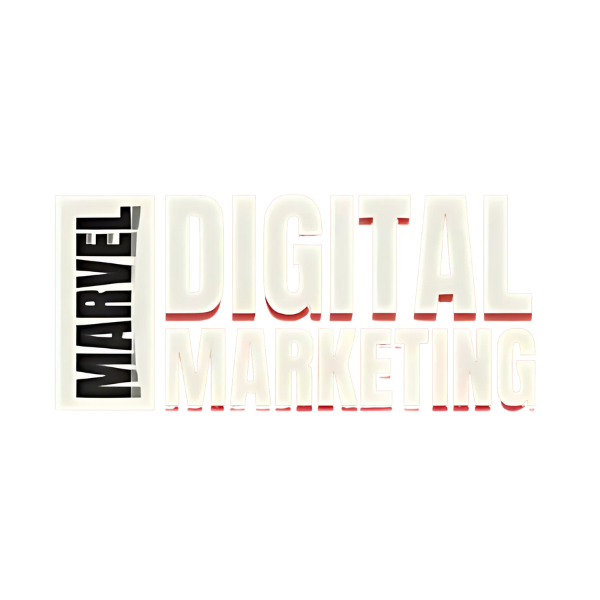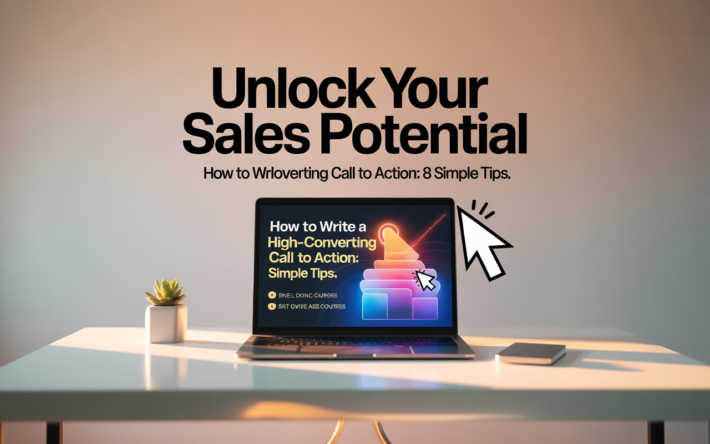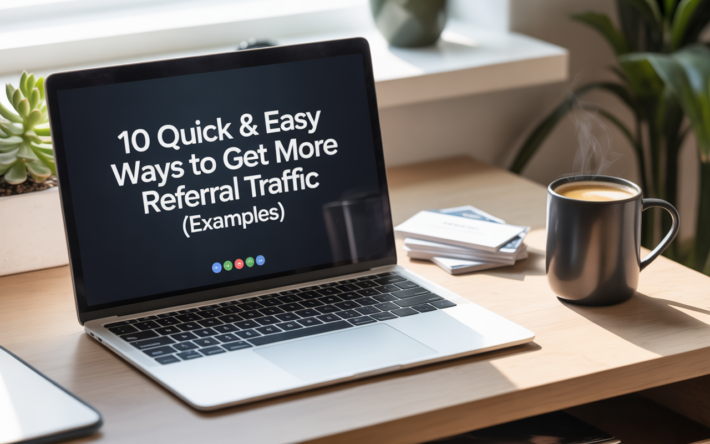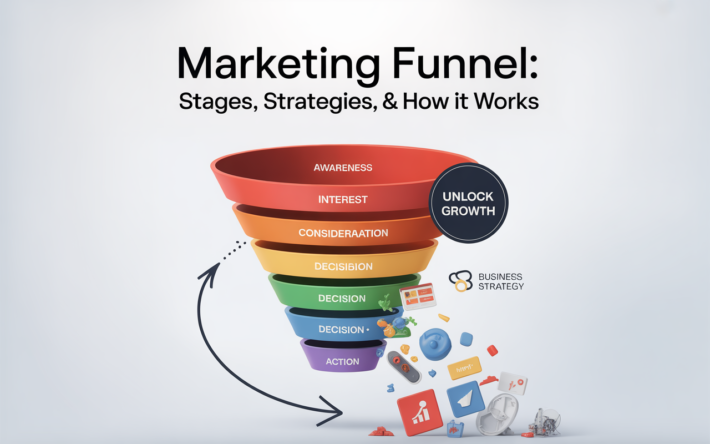How to Advertise on Facebook: The Visual, Step-by-Step Guide
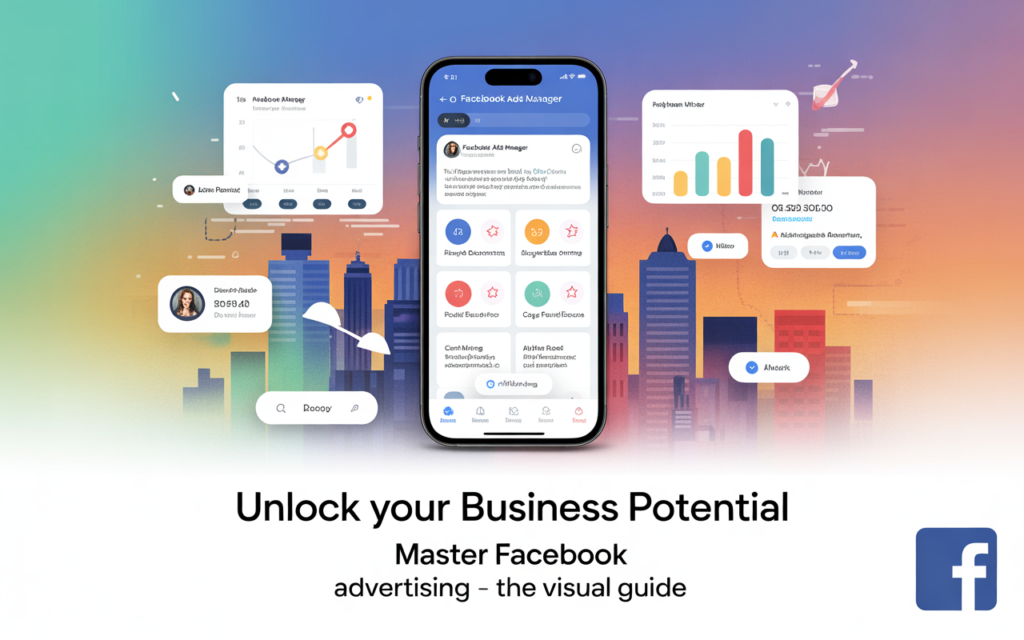
If you are wondering how to advertise on Facebook, the first step is understanding why this platform is so powerful for businesses. With over 3 billion monthly active users worldwide (Statista, 2024),
Facebook is not just a social network—it’s a global marketplace where brands, entrepreneurs, and startups can connect with their ideal customers.
Learning how to advertise on Facebook gives you access to three key advantages:
- Massive Audience Reach – Whether you want to target your local city or expand globally, Facebook lets you connect with people who are most likely to engage with your brand.
- Flexible Budgets – You don’t need millions in ad spend. Even campaigns starting at just $1 per day can generate results.
- Advanced Targeting Options – From age and location to interests, behaviors, and retargeting past visitors, Facebook ensures every ad dollar works smarter.
In simple words, mastering how to advertise on Facebook helps small businesses compete with large corporations on the same stage—making it one of the most cost-effective marketing strategies today.
What Does It Mean to Learn
Before diving deeper, it’s important to understand what it means to advertise on Facebook. In simple terms, Facebook Ads are paid promotions that businesses create to reach a targeted audience within the Facebook ecosystem, which also includes Instagram, Messenger, and Audience Network.
When you learn how to advertise on Facebook, you’re essentially paying to place your brand in front of the right people at the right time. These ads blend seamlessly into the platform, making them less intrusive and more engaging.
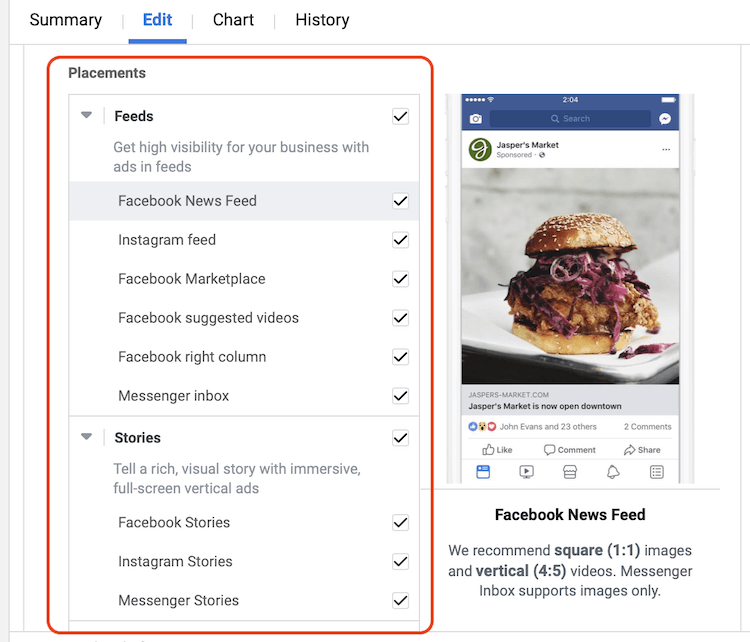
Here are a few examples of how Facebook Ads appear:
- In Feeds – Ads show up directly in users’ News Feeds, looking similar to regular posts but marked with a small “Sponsored” tag.
- In Stories – Full-screen, vertical ads appear between users’ stories on Facebook and Instagram, often using video, images, or interactive polls.
- In Messenger – Ads are displayed inside Facebook Messenger, giving brands a direct way to connect and chat with potential customers.
This flexibility makes Facebook Ads a powerful tool for businesses. Whether your goal is to increase website traffic, generate leads, or boost sales, understanding how to advertise on Facebook means using ad formats that blend naturally with how people already use the platform.
Read More: Why Small Business Owner Should Hire Digital Marketing Agency in 2025
Accounts & Tools You Need Before Learning How to Advertise on Facebook
Before you dive into campaigns, it’s important to set up the basic tools that make running ads smooth. Think of these as the control room for everything you’ll do when learning how to advertise on Facebook.
Here’s what you’ll need:
1. Facebook Page
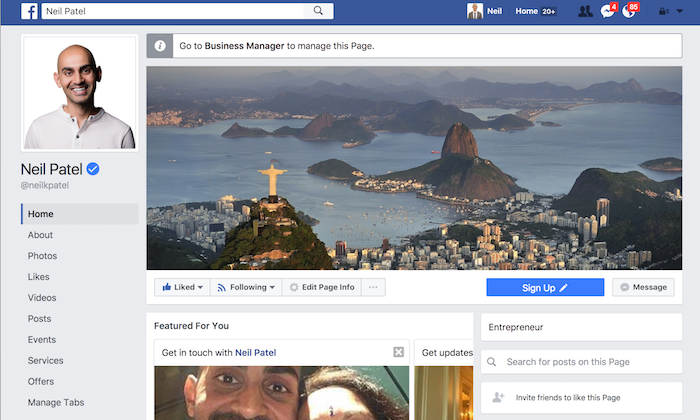
This is your public business profile—and it’s required to run ads. A Page acts as the face of your brand on Facebook, where people can follow, like, and interact with you.
2. Meta Business Suite / Business Manager
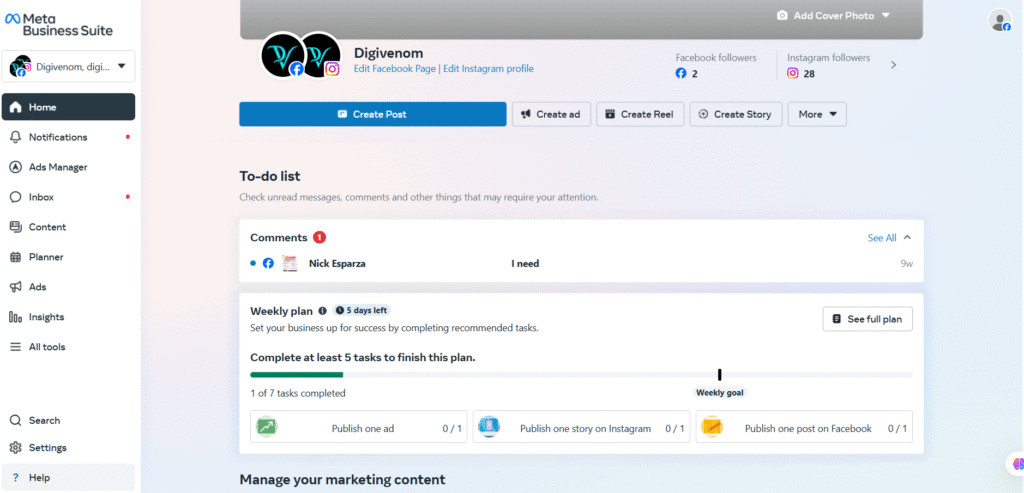
This is your management hub. Here you can:
- Connect your Facebook Page and Instagram account.
- Manage ad accounts.
- Assign team members with roles (Admin, Advertiser, etc.).
- Organize all assets in one place.
3. Ads Manager
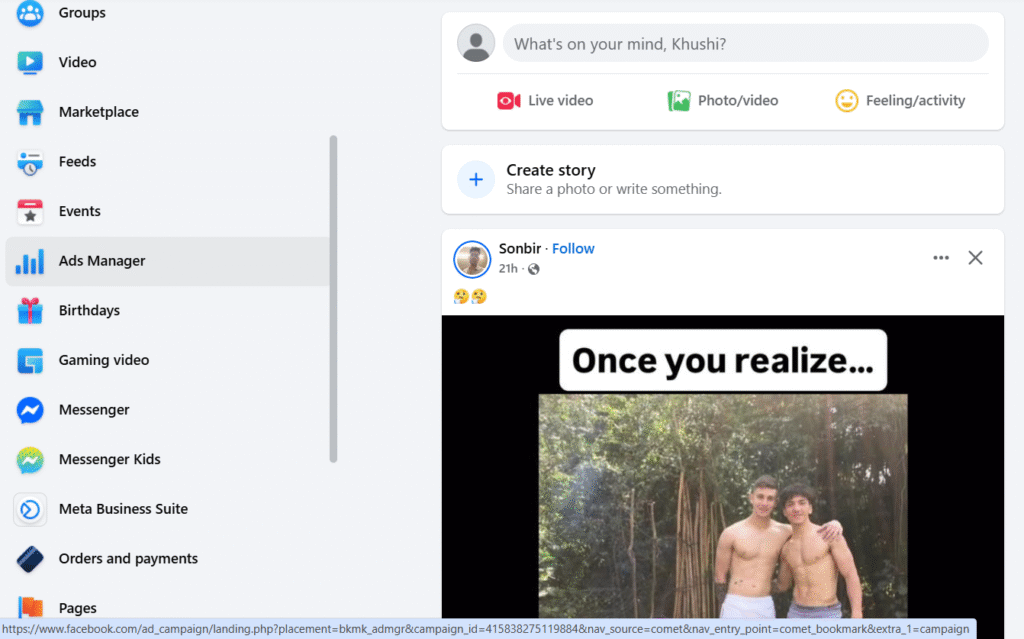
This is your campaign dashboard. Ads Manager is where you’ll:
- Create ad campaigns.
- Set budgets and schedules.
- Track performance with real-time results.
4. Events Manager
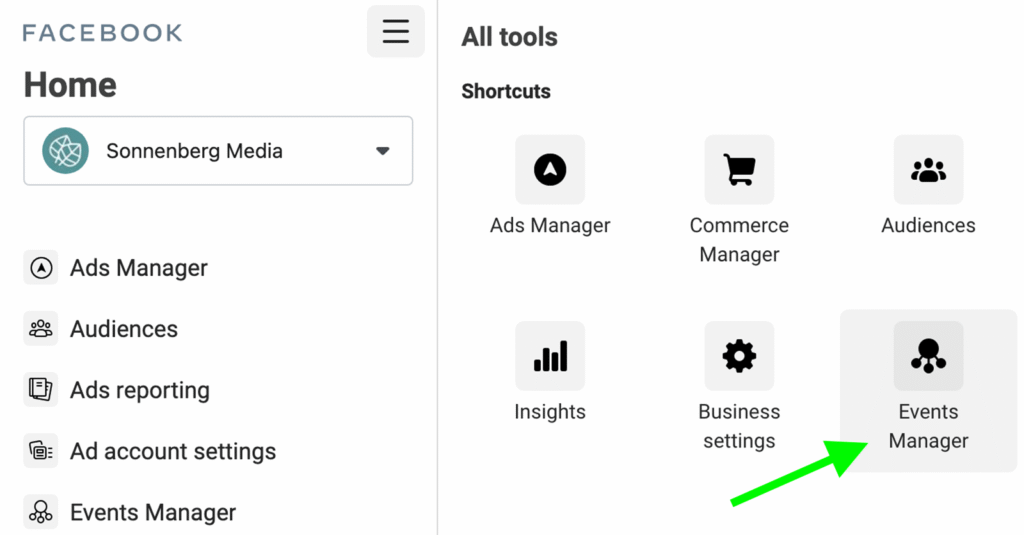
This tool helps you track actions people take on your website. By installing the Meta Pixel or Conversions API, you can see:
- Who visited your site.
- Which products they viewed.
- Whether they completed a purchase.
5. Commerce Manager / Catalog (Optional)
If you run an online store, this is where you’ll upload product feeds. It lets you create Dynamic Ads that show people products they’ve already viewed, making your ads more personalized and effective.
Setting up these accounts and tools is the very first step to running ads successfully. Without them, even the best strategy won’t get off the ground.
Once this “control room” is ready, you can confidently move on to learning the actual steps of how to advertise on Facebook.
Types of Facebook Ads You Can Use When Learning How to Advertise on Facebook
One of the most important steps in mastering how to advertise on Facebook is understanding the different ad formats available.
Each type of Facebook Ad serves a unique purpose, allowing businesses to showcase products, tell stories, and engage audiences in creative ways.
Here are the main types of Facebook Ads you can use:
1. Image Ads
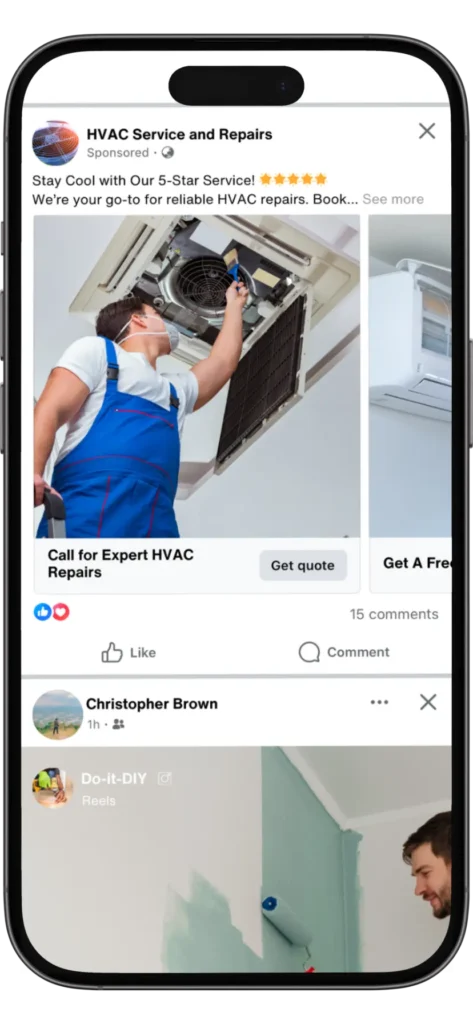
Simple yet powerful, Image Ads are perfect for highlighting a single product, service, or message. According to Meta, posts with visuals get 94% more views than text-only posts, making image-based ads a great starting point when learning how to advertise on Facebook.
Read More: The Secret to High-Performing Meta Ads Creatives
2. Video Ads
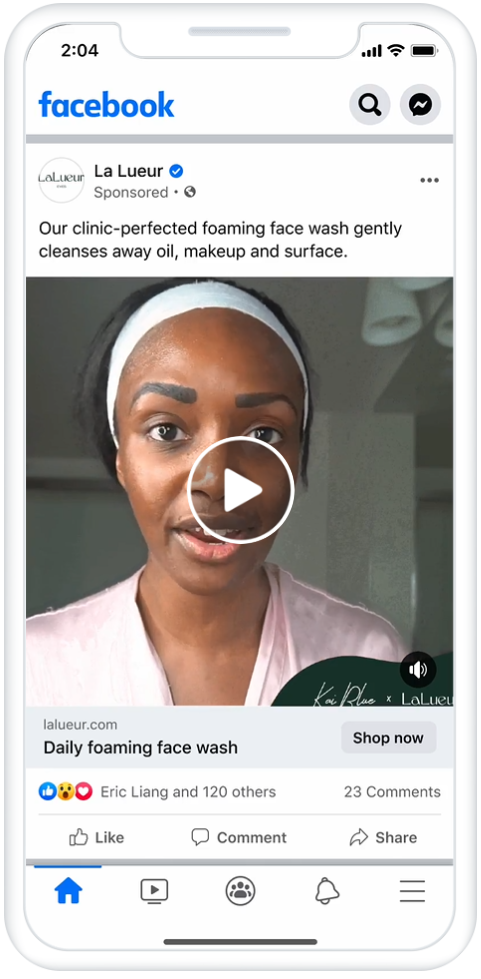
Video Ads capture attention quickly and are highly engaging. Short clips (15–30 seconds) perform best, especially for mobile users. Businesses use video ads to showcase product demos, testimonials, or brand stories.
3. Carousel Ads
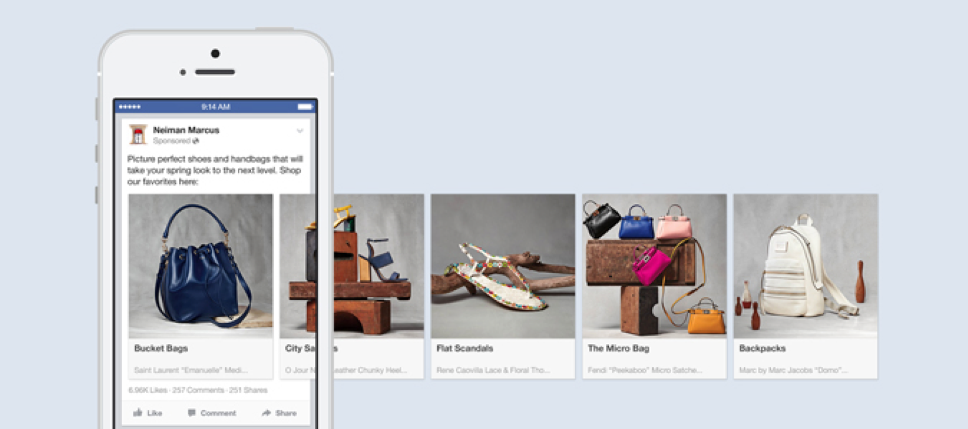
Carousel Ads let you display multiple images or videos in a single ad, each with its own link. This is especially effective for eCommerce brands that want to show different product features or collections in one campaign.
4. Story & Reel Ads
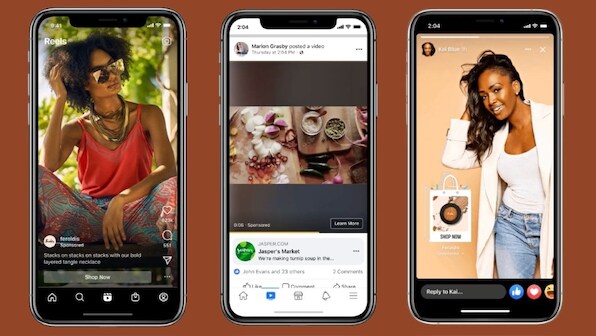
Stories and Reels are full-screen, vertical ads that appear between user-generated content. With 500+ million people using Stories daily, these ads are highly immersive and perfect for limited-time promotions.
5. Lead Generation Ads
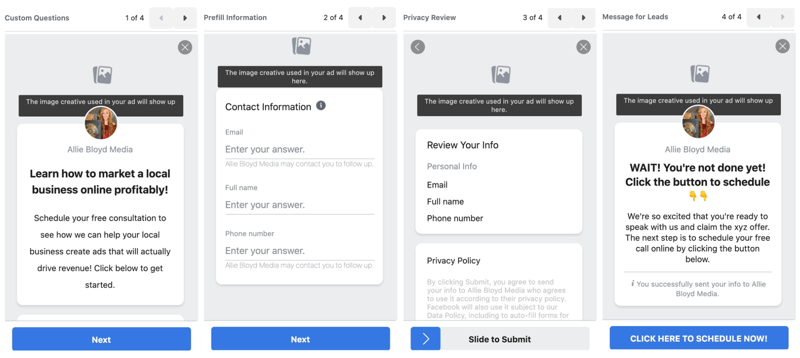
Lead Ads allow you to collect customer information directly on Facebook without requiring users to leave the app. This format is ideal for businesses offering free trials, newsletters, or event registrations.
6. Collection & Dynamic Product Ads
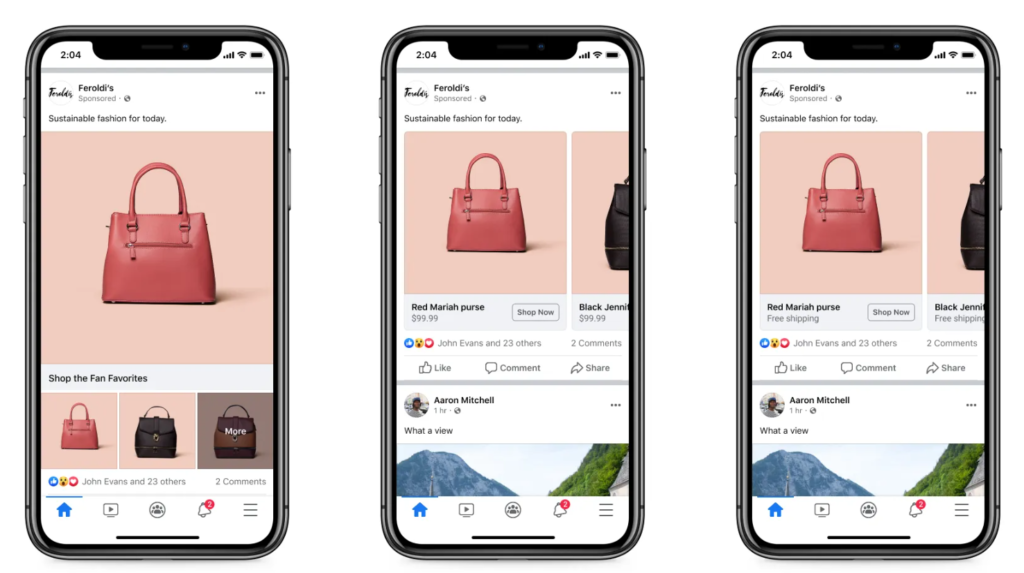
These ads combine product catalogs with personalized targeting. For example, if someone viewed a product on your website but didn’t purchase, Dynamic Product Ads can retarget them with the exact same item inside Facebook or Instagram.
By understanding these formats, you’ll be better prepared to decide which ad type fits your marketing goals.
The key to mastering how to advertise on Facebook is choosing the right ad format that connects with your audience at the right stage of their buying journey.
How to Advertise on Facebook: Step-by-Step Beginner Walkthrough
If you’re wondering How to Advertise on Facebook, this clear step-by-step guide walks you through the exact actions a beginner needs to take — no fluff, just practical steps, tips, and short examples so you can launch your first campaign with confidence.
Step 1: Create a Facebook Business Account
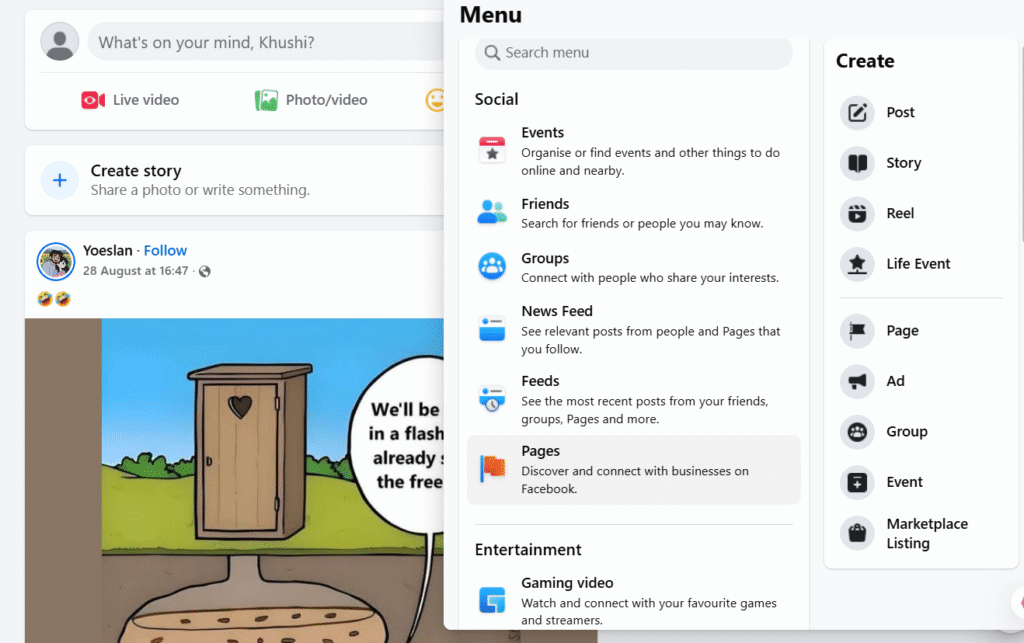
- Go to business.facebook.com and create a Business Manager (now called Meta Business Manager).
- Add your Facebook Page and (if you have one) your Instagram account.
- Set up roles/permissions for team members and add a payment method.
- Example: A local bakery creates Business Manager, connects its Page and Instagram, then adds the shop owner as Admin and a VA as Advertiser.
Step 2: Open Meta Ads Manager

- Ads Manager is where you build campaigns. The structure is Campaign > Ad Set > Ad.
- Click Create and pick a campaign objective (we’ll cover objectives next).
- Tip: Explore the “Campaign” vs “Ad Set” split — campaign = goal, ad set = audience & budget, ad = creative.
Step 3: Choose Your Campaign Objective
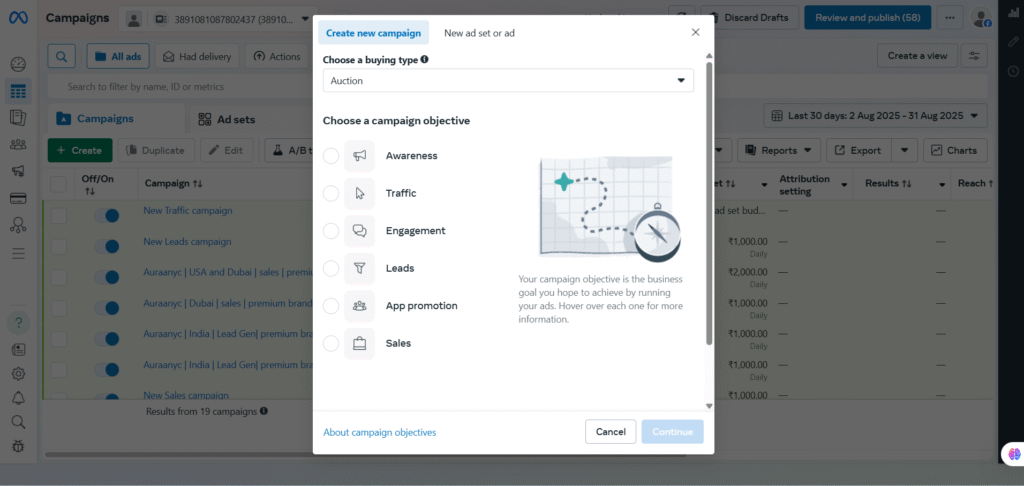
Pick the objective that matches your goal:
- Awareness: Brand awareness, reach.
- Consideration: Traffic, engagement, app installs, video views, lead generation, messages.
- Conversion: Conversions, catalog sales, store traffic.
Example: If you want sales from an online store, choose Conversions or Catalog Sales; if you want signups, choose Lead Generation.
Read More: Right Facebook Ad Objectives to Choose for Your Business in 2025!
Step 4: Define Your Target Audience
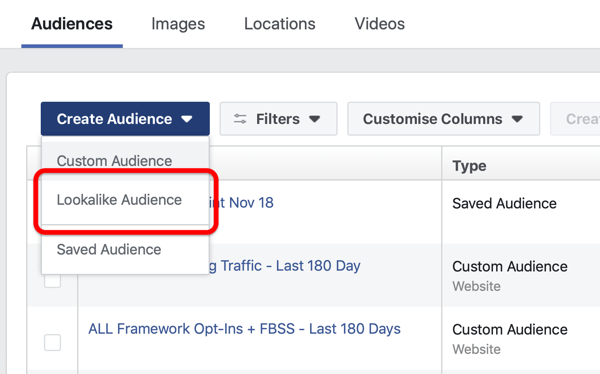
Defining audiences is one of the biggest levers to success — and a core part of How to Advertise on Facebook effectively. Options:
- Core Audience: demographics, locations, interests, behaviors. Good for specific niche targeting (e.g., women 25–34, within 25 km, interested in yoga).
- Custom Audience: people who visited your website (via Meta Pixel), existing customers (upload a list), or engaged with your content. Use this to retarget warm leads.
- Lookalike Audience: Facebook finds people similar to your best customers (1% = most similar). Start with a 1% lookalike of your top purchasers.
- Practical tip: Install the Meta Pixel on your site or use the Conversions API so you can track visitors and conversions — this enables retargeting and performance optimization.
Read More: What is Facebook Ads Retargeting and its Benefits for Business
Step 5: Select Ad Placements
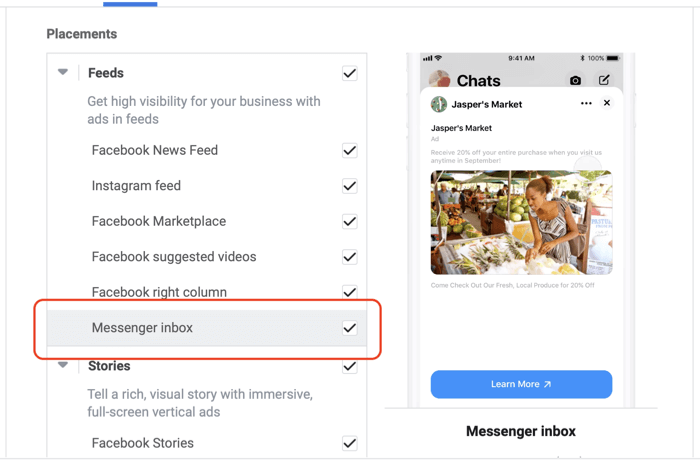
- Placements include: Facebook Feed, Instagram Feed, Stories & Reels, Messenger, and Audience Network.
- Automatic Placements (recommended for beginners): Facebook will place your ads where they’re likely to perform best.
- Manual placements are useful if you have a creative made only for Stories or Reels.
Step 6: Set Your Facebook Ads Budget
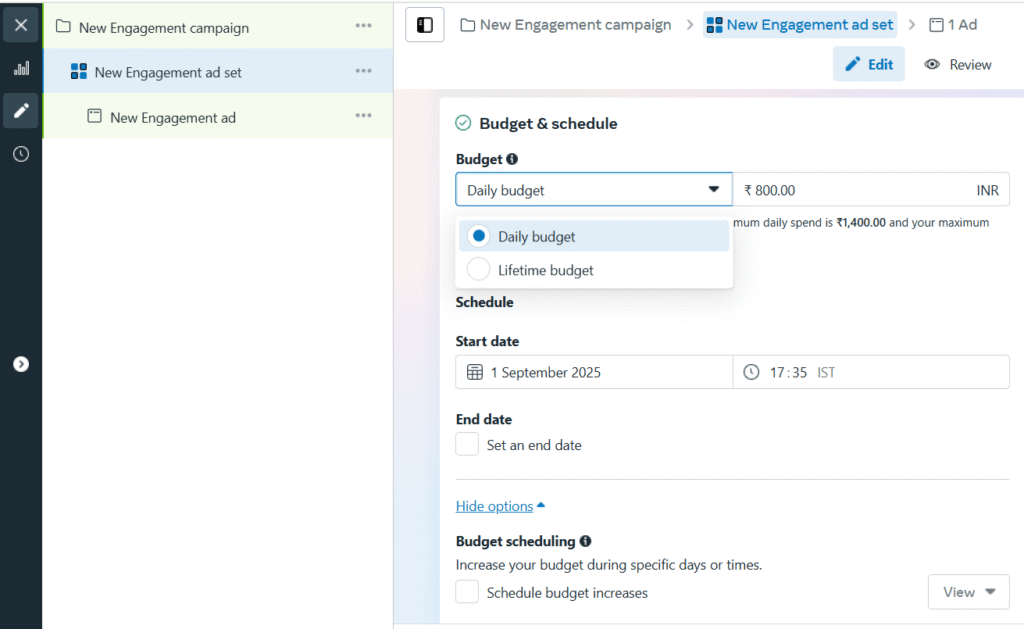
- Choose Daily or Lifetime budget and consider Campaign Budget Optimization (CBO) to let Meta allocate across ad sets.
- Beginner guidance: start small to test — many beginners test at $5–$20 per day per campaign depending on goals. For split-testing multiple ad sets, increase total accordingly (e.g., 3 ad sets × $10/day each = $30/day).
- Bidding strategies: Lowest cost (automatic) is easiest; manual bidding is advanced.
- Tip: Run tests for at least several days to gather data before making big changes.
Step 7: Design and Write Your Ad Creative
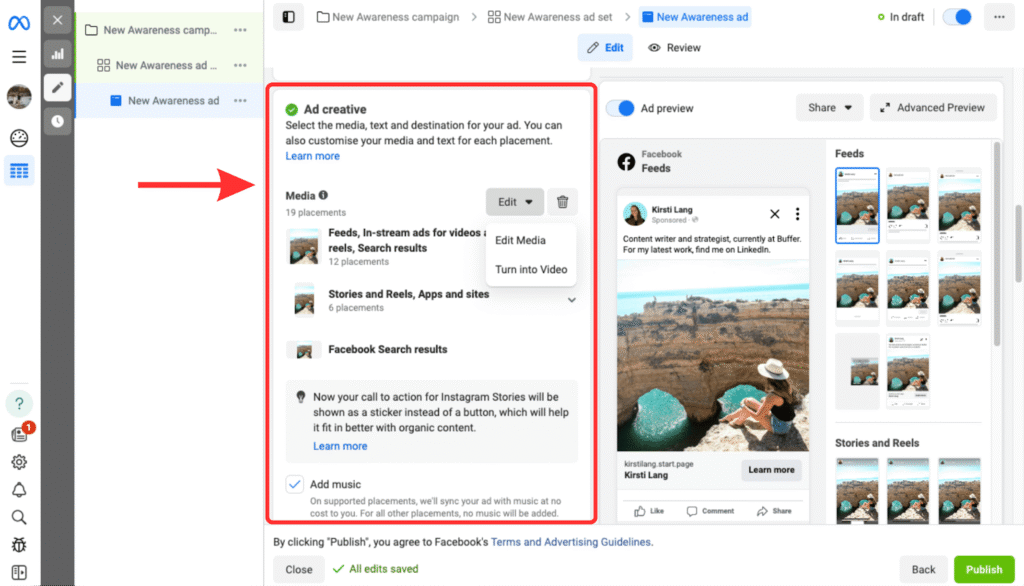
- Keep creatives simple and mobile-first: vertical or square images/videos. Short videos (15–30s) usually perform best on mobile.
- Hook viewers in the first 3 seconds. Use captions — many watch without sound.
- Copy tips: strong headline, clear value (what’s in it for them), one CTA (Shop, Learn More, Sign Up). Keep primary text concise and scannable.
- Example combos: Carousel to show 3 product benefits; 15s demo video for product conversions; Lead Ad with a short form for email signups.
Read more: The Visual Facebook Ads Guide for Beginners
Step 8: Publish Your Facebook Ad Campaign
- Click Publish — ads go through an automated review (often minutes to a few hours).
- Monitor the learning phase (your ad sets are “learning” how to best deliver; roughly speaking, Meta recommends you get ~50 optimization events per week to stabilize results).
- Track KPIs based on your objective: CTR and CPC for traffic; CPA, ROAS, and conversion rate for sales; CPL for leads.
- Iterate: pause low-performers, scale winners (increase budget gradually), and refresh creative every few weeks to avoid ad fatigue.
Follow these eight steps and you’ll have a practical, tested workflow for How to Advertise on Facebook. Start small, measure clearly (CTR/CPC/CPA/ROAS), and optimize one thing at a time — that’s the smartest way to learn How to Advertise on Facebook and get real results.
Read More: Best Ways to Optimize Facebook Lead Ad Campaigns
Understanding Campaign Structure in How to Advertise on Facebook
When learning how to advertise on Facebook, one of the first things you’ll come across is the campaign structure. Don’t worry—it’s actually very simple once you break it down. Think of it as a three-layer hierarchy:
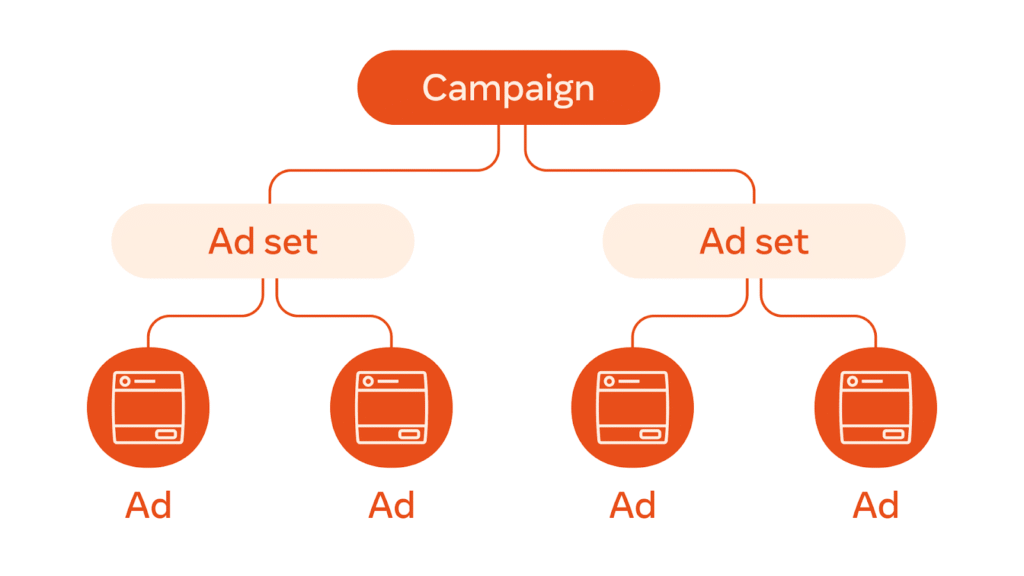
1. Campaign = Your Goal
This is where you choose your objective—what do you want your ad to achieve?
- Do you want more people to notice your brand? → Choose Awareness.
- Do you want clicks to your website? → Choose Traffic.
- Do you want leads or sales? → Choose Conversions or Leads.
In short: Campaign = Why you’re running the ad.
2. Ad Set = Who, Where, and How Much
Inside each campaign, you’ll set up Ad Sets. This is where you define the details:
- Audience → who you want to reach (age, location, interests, behaviors).
- Placements → where the ads show up (Facebook Feed, Instagram Stories, Messenger, etc.).
- Budget & Schedule → how much you want to spend and how long the ad should run.
- Bid Strategy → how Facebook spends your money (automatic is best for beginners).
In short: Ad Set = Who sees the ad, where they see it, and how much you spend.
3. Ad = The Creative
Finally, the Ad is what people actually see in their feeds or stories. This includes:
- The image or video you use.
- The headline and text you write.
- The Call to Action (CTA) button like Shop Now, Sign Up, or Learn More.
In short: Ad = What your audience sees.
Remember this simple formula when learning how to advertise on Facebook:
- Campaign = Goal
- Ad Set = Who/Where/How much
- Ad = What people see
How to Advertise on Facebook with the Right Audience Targeting
One of the most important parts of learning how to advertise on Facebook is making sure your ads reach the right people. You don’t want to waste money showing ads to people who will never buy from you, right? That’s where Facebook’s powerful targeting options come in.
Here are the three main audience types you can use:
1. Core Audiences
These are audiences you create based on basic details like:
- Age & Gender – e.g., women aged 25–40.
- Location – people in your city, state, or even a specific radius around your store.
- Interests & Behaviors – fitness lovers, frequent travelers, online shoppers, etc.
Example: A gym could target men and women aged 20–35 within 10 km of the gym who are interested in “fitness” and “healthy lifestyle.”
2. Custom Audiences
These are people who already know your business in some way. You can create audiences from:
Example: An online clothing store can retarget people who visited their site but didn’t complete a purchase.
- Website visitors (via Meta Pixel).
- Your email or customer list.
- People who engaged with your Facebook/Instagram content.
3. Lookalike Audiences
This is where Facebook does the heavy lifting. It finds new people who are similar to your best customers.
- You provide Facebook with a “source audience” (like past buyers or email subscribers).
- Facebook then creates a Lookalike Audience—people who share similar interests and behaviors.
Example: If your top customers are young professionals who buy eco-friendly products, Facebook will find more users with those same traits.
The secret to mastering how to advertise on Facebook is combining these three:
- Use Core Audiences to start broad.
- Use Custom Audiences to retarget warm leads.
- Use Lookalike Audiences to scale and reach new potential buyers.
Read More: A/B Testing Meta Ads: How to Optimize Your Campaigns
How to Advertise on Facebook Using Different Budget Types
When you’re learning how to advertise on Facebook, money is usually the biggest question: “How much should I spend?” The good news is—you’re in control. Facebook gives you different budget types so you can decide exactly how your money is spent. Let’s break them down simply.
1. Daily Budget
This is how much you want to spend per day.
- Example: You set ₹500 ($6) per day. Facebook will try to spend around that amount daily.
- Good for: Beginners who want steady, consistent spending.
Tip: Start small—₹300–₹700 per day ($5–$10) is enough to test your first campaign.
2. Lifetime Budget
This is a total amount you want to spend over a fixed time frame.
- Example: You set ₹7,000 ($85) for 14 days. Facebook will spread it out automatically.
- Good for: Running ads for a specific promotion or event (like a weekend sale).
3. Campaign Budget Optimization (CBO)
With CBO, you set one budget for the whole campaign, and Facebook automatically decides how to split it across your different ad sets.
- Example: You set ₹1,500 ($18) per day for 3 ad sets. Instead of splitting evenly, Facebook gives more money to the ad set performing best.
- Good for: Beginners who don’t want to worry about dividing budgets manually.
4. Bid Strategies
This is how you tell Facebook to spend your money.
- Lowest Cost (default) → Facebook gets the most results for your budget. (Best for beginners).
- Cost Cap → You set a target cost per result. (e.g., “I don’t want to pay more than ₹100 per lead”).
- ROAS Target → Focus on return on ad spend. (Advanced users, usually for eCommerce).
Example Scenarios for Beginners:
- You run a café and want to test ads → Start with Daily Budget ₹400/day ($5) using Lowest Cost.
- You launch a weekend sale → Use Lifetime Budget ₹5,000 ($60) for 5 days.
- You have multiple ad sets (different audiences) → Use CBO ₹1,200/day ($15) and let Facebook auto-allocate.
How to Advertise on Facebook with Smart Budget Tips & Rules of Thumb
When you’re learning how to advertise on Facebook, setting the budget is just the first step. The real game is managing it wisely. Facebook ads run on an algorithm that learns from your data, so small tweaks can make a big difference. Here are some golden rules for beginners:
1. Don’t Change Budget Drastically During the Learning Phase
When you launch a new campaign, Facebook goes into a learning phase where it figures out how to deliver your ads.
- Rule: Keep changes small (no more than 20% up or down at a time).
- Why: Big jumps (like doubling your budget overnight) confuse the algorithm and reset learning.
Example: If your budget is ₹500/day ($6), increase to ₹600/day ($7.20) — not straight to ₹1,000/day.
2. Understand the Learning Phase
The learning phase usually needs around 50 optimization events (like purchases, leads, or clicks) per week to stabilize.
- If you don’t hit that number, your results may be unstable.
- Patience is key: let the ads run long enough before making major changes.
Example: If you’re running a lead generation ad, aim for at least 50 signups per week.
3. When to Scale Your Budget
If your CPA (Cost Per Action) is stable and results look good:
- Increase budget gradually (10–20% every few days).
- OR duplicate the winning ad set and scale horizontally (test with new audiences).
Example: You’re getting leads at ₹80 each ($1). Slowly scale budget instead of jumping to double.
4. What to Do If CPA is Too High
Sometimes, ads cost more than you want. Instead of just spending more, optimize smartly:
- Try narrower audiences (targeting too broad can waste money).
- Test new creatives (images, videos, or ad copy).
- Improve your landing page so more clicks turn into conversions.
Example: If your ad is driving clicks but no signups, the issue may be your landing page, not the ad.
How to Advertise on Facebook by Tracking the Right Metrics
When you learn how to advertise on Facebook, running ads is only half the battle — the other half is tracking the right numbers. These numbers (called metrics) show whether your ad is working or wasting money. Let’s break them down in simple terms:
1. Impressions
- What it means: How many times your ad was shown.
- Example: 10,000 impressions = your ad appeared 10,000 times (not always to unique people).
2. Reach
- What it means: How many unique people saw your ad.
- Example: If reach = 4,000, that means 4,000 different people saw it (even if some saw it multiple times).
3. Frequency
- What it means: Average number of times each person saw your ad.
- Rule of thumb: High frequency (e.g., 6+) can cause ad fatigue (people get bored).
4. CTR (Click-Through Rate)
- Formula: Clicks ÷ Impressions.
- Why it matters: Shows if people are interested in your ad.
- Low CTR = weak ad creative or wrong audience.
Example: If CTR is below 1%, test new headlines, images, or targeting.
Read More: Click-Through Rate (CTR) in Meta Ads and How to Improve it
5. CPC (Cost Per Click)
- What it means: How much you’re paying for each click.
- Lower CPC = more affordable traffic.
Read More: What is a Good Cost Per Click (CPC)
6. CPM (Cost Per 1,000 Impressions)
- What it means: Cost to show your ad 1,000 times.
- Good for measuring awareness campaigns.
7. CPA (Cost Per Action)
- What it means: Cost you pay for the actual goal (like a lead or sale).
- Most important metric for beginners focusing on conversions.
Example: If you spend ₹2,000 and get 20 leads → CPA = ₹100 per lead.
8. ROAS (Return on Ad Spend)
- Formula: Revenue ÷ Ad Spend.
- Goal: ROAS > 1 = profitable.
- Example: Spend $100, earn $300 → ROAS = 3 (great result).
9. Conversion Rate
- What it means: % of clicks that actually convert (buy, sign up, etc.).
- Example: 100 clicks → 10 signups = 10% conversion rate.
Beginner Tip for How to Advertise on Facebook
- For conversion campaigns → focus on CPA + Conversion Rate first.
- For awareness campaigns → watch Reach + Frequency.
How to Advertise on Facebook with Effective Ad Creatives
When it comes to learning how to advertise on Facebook, your ad creative is the make-or-break factor. Even with the best targeting and budget, a boring or unclear ad won’t get clicks. Let’s go step by step on how to design effective creatives that actually convert.
1. Best Practices for Images and Videos
- Use High-Quality Visuals: Blurry or stretched images reduce trust. Aim for clear, professional-quality visuals.
- Show Real People: Ads featuring people perform 2x better than product-only shots (Facebook internal data).
- Keep Videos Short: 15–30 seconds works best. Capture attention in the first 3 seconds.
- Use Mobile-Friendly Formats: Remember, over 98% of Facebook users access via mobile (Statista, 2024). Design for vertical (4:5) or square formats.
2. Writing Clear Ad Copy and CTAs
Your words are just as important as visuals when figuring out how to advertise on Facebook.
- Keep Headlines Simple: Example: “Get 20% Off Today – Shop Now”.
- Talk to Your Audience: Use “you” to make it personal.
- Highlight Benefits, Not Just Features: Instead of “Our shoes are waterproof,” try “Stay dry and comfortable all day.”
- Strong Call-to-Action (CTA): Examples – Shop Now, Sign Up Free, Get Started Today.
3. Align Visuals and Text with Your Goal
Every part of your ad should connect back to your campaign objective.
- Awareness Ads: Use bold visuals + short, catchy headlines to grab attention.
- Lead Generation Ads: Highlight trust signals (like testimonials or free trials).
- Sales Ads: Show the product in action with a clear discount or benefit.
Example: If your goal is lead generation, an image of a free eBook cover + headline “Download Your Free Guide” + CTA “Sign Up” all work together.
Common Mistakes to Avoid When Learning How to Advertise on Facebook
When beginners start exploring how to advertise on Facebook, they often repeat the same mistakes that hurt performance and waste budget. Knowing these pitfalls helps you save time, money, and frustration.
Too Many Changes at Once
Facebook’s algorithm needs stability during the learning phase. If you keep changing budgets, targeting, or creatives too often, the system can’t optimize properly. Keep adjustments small (around 10–20%) and give campaigns time to settle.
Using Tiny Budgets for Conversion Goals
One of the biggest errors in how to advertise on Facebook is setting very low budgets for campaigns that require learning, like conversions. Without enough data points, Facebook struggles to optimize. Make sure your budget allows at least 50 conversion events within a week.
Ignoring Landing Pages
Even the best ad can fail if your landing page is slow or irrelevant. Beginners learning how to advertise on Facebook often overlook this. A fast, mobile-friendly page with clear CTAs is critical for higher conversion rates.
Targeting Very Broad Audiences for Testing
Broad audiences may seem safe, but during testing they create “noisy” results. Start with narrower targeting (interests, demographics, or custom audiences) so you get cleaner data before expanding.
Over-Relying on One Creative
Ad fatigue happens fast. If you rely on a single image or video, performance will drop. Always rotate at least 3–4 ad creatives in every ad set to keep your audience engaged and test what works best
Final Tips for Beginners on How to Advertise on Facebook
If you’re just starting out and want to master how to advertise on Facebook, remember that success comes from consistent testing, learning, and improving. Here are some beginner-friendly tips to keep in mind:
Start Small, Learn Fast
Don’t pour huge budgets into your first campaign. Instead, begin with small daily budgets and test different creatives, audiences, and placements. The best way to understand how to advertise on Facebook is by experimenting and seeing what works for your business.
Track Results in a Simple Spreadsheet
Keep a record of your ad creatives, audiences, budgets, and results in one place. This makes it easier to compare performance and spot patterns. Data-driven decisions are at the heart of effective Facebook Ads.
Refresh Your Creatives Regularly
People scroll fast, and ad fatigue happens quickly. Swap in fresh images, videos, or copy every few weeks to maintain engagement. Beginners learning how to advertise on Facebook often underestimate the power of creative variety.
Be Patient During the Learning Phase
Facebook’s algorithm needs time to optimize. Avoid making too many changes in budget or targeting during the learning phase. Small, gradual adjustments (10–20%) keep performance steady.
Focus on Your Landing Page
Even if your ads are great, a slow or confusing landing page can kill conversions. Before scaling ad spend, make sure your website or landing page is fast, mobile-friendly, and aligned with your ad’s promise.
Read More: How to Optimize Facebook Lead Ads for Better Quality and Higher Volume
